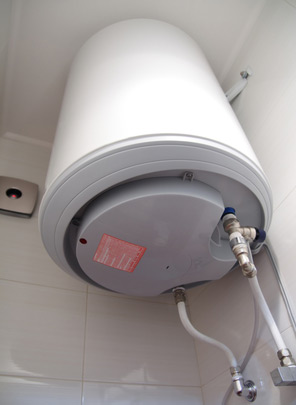Ways to Extend the Life of Your Home's Hot Water System Through Maintenance
Ways to Extend the Life of Your Home's Hot Water System Through Maintenance
Blog Article
What are your opinions about How to Maintain Your Water Heater & Prolong its Life?

Hot water is necessary for daily comfort, whether it's for a revitalizing shower or washing recipes. To ensure your hot water system runs efficiently and lasts much longer, routine maintenance is vital. This post offers practical pointers and understandings on just how to maintain your home's warm water system to avoid disturbances and costly repair services.
Introduction
Maintaining your home's warm water system might appear complicated, but with a couple of easy steps, you can guarantee it operates efficiently for many years to come. This guide covers every little thing from understanding your warm water system to DIY upkeep suggestions and knowing when to employ specialist help.
Relevance of Maintaining Your Warm Water System
Regular maintenance not just extends the lifespan of your warm water system but likewise guarantees it operates effectively. Neglecting upkeep can lead to reduced performance, higher power costs, and even early failure of the system.
Indicators Your Hot Water System Requirements Upkeep
Knowing when your hot water system requires focus can stop major problems. Watch out for indicators such as inconsistent water temperature, weird noises from the heating system, or corroded water.
Understanding Your Warm Water System
Prior to diving right into maintenance tasks, it's helpful to understand the basic elements of your hot water system. Normally, this consists of the hot water heater itself, pipes, anode poles, and temperature level controls.
Month-to-month Upkeep Tasks
Normal monthly checks can help catch minor concerns prior to they rise.
Purging the Hot Water Heater
Purging your hot water heater gets rid of debris accumulation, enhancing efficiency and prolonging its life.
Monitoring and Replacing Anode Rods
Anode poles avoid deterioration inside the storage tank. Examining and replacing them when broken is critical.
Checking and Adjusting Temperature Level Settings
Changing the temperature setups ensures optimal performance and safety and security.
DIY Tips for Upkeep
You can perform a number of upkeep tasks yourself to keep your hot water system in leading problem.
Looking for Leakages
On a regular basis evaluate pipelines and connections for leaks, as these can bring about water damages and higher bills.
Evaluating Pressure Alleviation Valves
Examining the stress safety valve guarantees it works properly and avoids excessive stress build-up.
Insulating Pipelines
Shielding hot water pipes lowers warmth loss and can save energy.
When to Call a Professional
While do it yourself upkeep is useful, some issues call for expert competence.
Facility Issues Calling For Specialist Help
Instances include major leakages, electric problems, or if your hot water heater is constantly underperforming.
Routine Specialist Maintenance Conveniences
Expert upkeep can include detailed assessments, tune-ups, and ensuring conformity with safety criteria.
Final thought
Routine upkeep of your home's hot water system is essential for effectiveness, longevity, and expense financial savings. By complying with these tips and understanding when to seek expert assistance, you can make sure a trustworthy supply of warm water without unanticipated disruptions.
Water Heater Maintenance Tips
Test the TPR Valve
Shut off the power and the cold-water supply valve. Place a bucket under the pipe connected to the temperature-pressure-release (TPR) valve on the top or side of the tank. (This valve opens if the tank pressure gets too high.) Lift the valve’s tab to let some water out, then let go. If water keeps flowing, drain the tank partway, unscrew the old valve with a pipe wrench, and install a new one. Check the Anode Rod
Put a hose to the tank’s drain cock and let out a few gallons of water. Now fit a 1 1/16-inch socket onto the rod’s hex head on top of the heater (or under its top plate) and unscrew the rod. If it’s less than ½ inch thick or coated with calcium, buy a new one, wrap its threads with Teflon tape, put it back in the tank, and tighten securely. Use this segmented rod if headroom above the tank is limited. Drain the Tank and Wash Out Sediment
Drain the remaining water in the tank into the bucket, then stir up the sediment on the tank’s bottom by briefly opening the cold-water supply valve. Drain and repeat until clean water comes out of the hose. Close the drain cock, refill the tank, and turn its power back on. Adjust the Temperature
Find the temperature dial on the side of the tank and unscrew its cover. Adjust the dial to 120 degrees using a flathead screwdriver. For every 10 degrees the temperature is lowered, you can expect to save up to 5 percent in energy costs. Turn the water heater off or the thermostat down to its lowest setting if you plan to be away from home for more than three days. Insulate the Pipes
Buy some self-sticking 3/8-inch-thick foam pipe insulation that matches the pipes’ diameter. Slide the foam over the hot-and cold-water pipes as far as you can reach. Insulating the cold-water pipe prevents condensation in summer. Peel the tape and squeeze the insulation closed. If the pipe is 6 inches or less from the flue, cover it with 1-inch-thick unfaced fiberglass pipe wrap. https://www.thisoldhouse.com/plumbing/21016402/how-to-maintain-a-water-heater

As a person who reads about Water Heater Maintenance Tips You Can't Afford to Forget, I imagined sharing that piece of content was important. Sharing is good. Helping others is fun. We love your readership.
Call Today Report this page